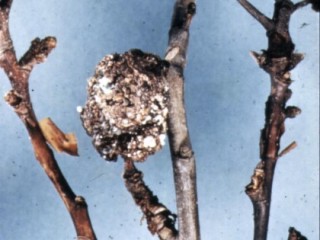Skip to main content
Brown rot - symptoms and recognition
Orchard – fruit rot
- Affected fruit show a pale brown/mid brown circular rot usually associated with a wound.
- The rot rapidly becomes covered with buff-coloured pustules, usually in concentric rings.
- Although the initial infection is always through a wound, the brown rot fungus can then spread to other fruit in a cluster by contact.
Orchard – cankers and mummies
- Brown rot overwinters in the orchard as cankers usually at the base of dead fruiting spurs, often referred to as foot cankers.
- Water-marking may be apparent on such cankers.
- Buff-coloured pustules appear on these cankers in early summer.
- The fungus also overwinters as mummified fruit either stuck on the tree or on the orchard floor.
- These fruits are shrivelled almost black and develop buff-coloured pustules in summer after rain.
Store – fruit rot
- Infection in store begins as a small brown spot on a wound or where a healthy fruit has been in contact with an infected fruit.
- It rapidly invades the entire fruit forming a mid to dark brown almost black, usually evenly shaped firm rot.
- In Cox and Bramley, the rot surface is often covered with white fungal growth and black resting bodies (sclerotia).
- This symptom is less common on Gala, Jonagold and Egremont Russet.
- After prolonged storage the whole fruit may become hard, black and mummified.
- Symptoms of the rot in store do not resemble those observed in the orchard.
- Brown rot spreads in store by contact.
- Nests of brown rotted fruit may therefore be observed in later stored fruit.

